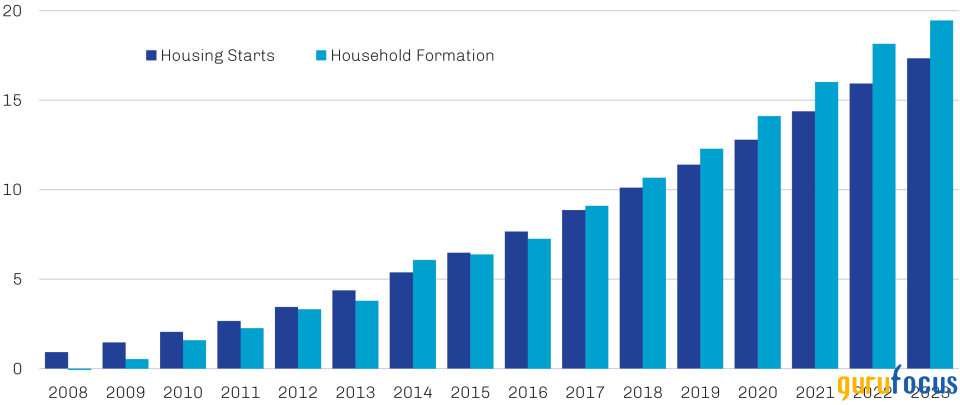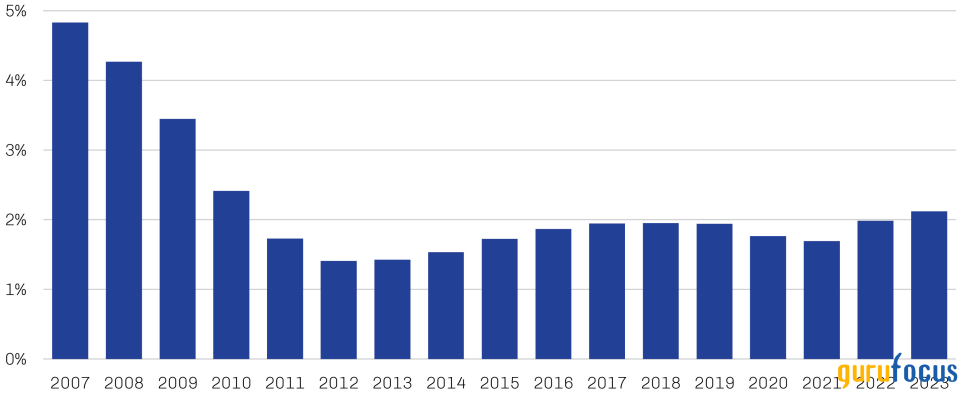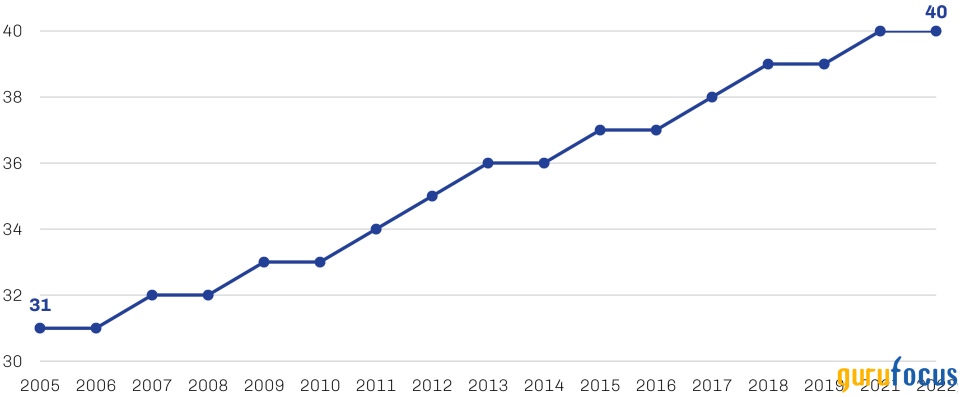First Eagle Commentary- Real Estate Lending: Strong Foundation for Investment
Key Takeaways
Continued strong dynamics in the US housing market combined with regulatory headwinds for conventional lenders have generated opportunities to invest in real estate specialty lending with attractive risk-adjusted, long-term return potential.
With appealing yields, robust cash flows and short durations, we believe residential transitional loans and land banking appear to be especially compelling segments among private assets.
In Publicly traded real estate-linked debtincluding both agency and non-agency securitiesmay provide attractive complements to private credit investments, if appropriate.
Investors with the flexibility to opportunistically manage exposures may capture the features offered within private and public real estate debt while exploiting the relative-value discrepancies that periodically emerge between them.
A confluence of events since the global financial crisis has skewed supply/demand dynamics in the US housing market while regulatory changes have prompted traditional banks to pull back from certain types of real estate lending.
The resulting structural imbalance has created opportunities for private lenders to provide liquidity to the real estate marketand to potentially generate attractive, long-term returns for investors. This has included participation in such private-market segments as residential transitional loans and land banking, where yields offer attractive complexity and illiquidity premia over traditional credit assets like leveraged loans and high yield bonds, alongside short durations and robust cash flows. Certain public-market assets, meanwhile, may complement these private investments. High-yielding opportunities may potentially be found in credit-risk transfer securities issued by agencies such as Fannie Mae and Freddie Mac, for example, or in instruments linked to mortgage insurance and non-qualifying mortgages.
While we believe supply/demand dynamics in the US residential real estate market are likely to support durable investment opportunities in real estate specialty lending, these investments tend to have high barriers to entry. Experience sourcing, underwriting and structuring such deals may be a prerequisite for success in this space.
US Housing Market Has Cooled but Remains Significantly UndersuppliedUS Housing Market Has Cooled but Remains Significantly UndersuppliedThe US hasn't built enough homes in recent decades, leading to a significant gap between housing supply and demand, estimates of which vary from 1.6 million to 5.5 million units.1 The lack of affordable homes highlights the need for increased supply in both the new- and existing-home markets. We believe the motivation to close the supply/demand gap represents a strong and durable tailwind for residential new construction and the renovation of existing homes as well as demand for the capital needed to fund these projects.
The current housing shortfall can be traced back to the global financial crisis, as the pullback in consumer credit at the time prompted a sharp decline in housing starts from which the industry has yet to recover.2 Household formation (that is, growth in the number of families), meanwhile, has continued nearly unabated, and the resulting gap between housing supply and demand has widened further, as shown in Exhibit 1.
The impact of new-housing underbuilding has been exacerbated by the limited supply of existing homes for sale, partially due to the lock-in effect that serves as a disincentive for homeowners to sell. To illustrate, 80% of outstanding mortgages carry an interest rate below 5%;3 30-year mortgage rates have averaged about 7% over the past 12 months.4 Consider the difference between a 7% mortgage rate and one that is 5%. If you are buying a $500,000 home with 20% down, your monthly payment at a 7% rate will be $2,661. The payment on the same home with a 5% rate would be 19% less at $2,147. And with a median age of owner-occupied homes at 40 years, the homes that do come to market likely will need remodeling to maximize their value.5
Exhibit 1. Household Formation Has Consistently Outpaced ConstructionCumulative in Millions, 2008 through 2023

Source: Federal Reserve Bank of St. Louis; data as of December 31, 2023.
While housing supply has grown increasingly strained over the past 15 years, regulatory changes in the wake of the global financial crisis have hampered banks' ability to finance certain types of real estate activities, including acquisition, development and construction lending. As shown in Exhibit 2, for example, construction loans as a percentage of bank total assets today are less than half of what they were in 2007. Effectively, the banks have been replaced by a highly fragmented set of lenders across the country lacking institutional capital, which has presented an opening for asset managers to become liquidity providers in the space at attractive terms.
Exhibit 2. Traditional Banks Have Pulled Back from Certain Types of Real Estate LendingConstruction Loans as a Percentage of Total Bank Assets, 2007 through 2023

Source: Federal Deposit Insurance Corporation; data as of December 31, 2023.
Despite the adverse impacts of inflation and tighter financial conditions, US consumers remain in good financial shape, suggesting near-term demand for housing should remain strong. At the end of the fourth quarter of 2023, the total value of the US single family housing market increased to an all-time high of $44.8 trillion, 86% above the 2006 peak.6 A large portion of this growth came from the increase of homeowners' equity, which rose 124% over this period, while outstanding mortgage debt only increased 31% to $13.1 trillion.6 Given the dramatic increase in equity relative to mortgage debt, the rate of aggregate residential mortgage debt to value has declined to 31% today from more than 50% in second quarter 2013.6 Households with low-rate mortgages secured before the recent hikes, in particular, have benefitted from this deleveraging and maintain strong debt-service ratios even as other forms of credit have grown more expensive.
Creating Durable Opportunities for Providers of Capital to the Real Estate IndustryThe increase in benchmark rates since the Federal Reserve began its rate-hike cycle in early 2022 has pushed yields across public credit investments in general to levels not seen in decades, while yields on more complex private credit assets also rose, albeit at a slower pace. In light of our constructive view on US residential real estate, the yields available in market segments like residential transitional loans and land banking appear particularly compelling to us. In addition to offering complexity and illiquidity premia of 200300 basis points over traditional market options like leveraged loans and high yield bonds, the short durations and robust cash flows typical of these assets enable frequent reinvestment of proceeds.7
Residential transitional loans. To many buyers, a refurbished home in an established neighborhood can be more desirable than a new home in a new area, as it allows them to tap into proven infrastructure like schools, parks and retail, potentially at a better price. This demand combined with the aged US housing stock shown in Exhibit 3 have fueled a surge in fix and flip activity in which real estate developers buy single-family residences with the intent of renovating and reselling at a profit within a short period of time. There is a similar dynamic evident in the multi-family space, as real estate investors seek to upgrade existing rental properties to standards that can command higher rents. Of course, all of this requires capital. As commercial banks have pulled back from providing this type of financing, a fragmented group of specialty lenders has stepped in to fund these short-duration value-add renovation loans. The majority of these lenders lack the capital to underwrite and hold these loans at meaningful scale, however, and asset managers have been able to provide necessary liquidity to the real estate industry by purchasing individual loans to construct diversified portfolios with attractive risk-adjusted, long-term return potential.
Exhibit 3. Aging US Housing Supply May Drive Demand for Renovation CapitalEstimates of Median Age in Years of US Owner-Occupied Housing, 2005 through 2022

Source: US Census Bureau, American Community Survey; data as of December 31, 2022. Most recent data available.Note: The Census Bureau did not release the standard American Community Survey in 2020 due to data-collection disruptions experienced during the Covid-19 pandemic.
Land banking. Another byproduct of post-crisis US housing market dynamics is a shortage of permitted, build-ready lots for single-family construction, as the ownership of such lots can substantially tie up capital on a homebuilder's balance sheet. The top homebuilders are increasingly moving toward a land light business model, and off-balance-sheet financing solutions like land banking have become a staple of their land inventory management strategies.
In an example of a land-banking deal, a lender may acquire an entitled, permitted and improved property while simultaneously entering into an agreement with a homebuilder giving it the option to acquire lots over time in exchange for a nonrefundable fee. The two parties commonly enter into a construction agreement whereby the builder is paid by the land banker to develop the land, and a takedown schedule governs the pace at which the homebuilder must acquire individual lots on that property. Homebuilders typically are willing to pay a significant spread over benchmark interest rates for the optionality and off-balance-sheet treatment a land-banking arrangement affords. Given their financial strength and long operating histories, large public homebuilders have the capacity to furnish significant upfront deposits and completion guarantees, as well as cover entitlement risk and environmental liabilities.
Public securities. The opportunity we see in US real estate debt is not limited to private deals, however; real estate-linked publicly traded structured credit, for example, may also provide attractive potential yields and serve as a complement to private deals. In fact, investors able to opportunistically manage their exposures to both public and private real estate debt markets may be well-positioned to capture not only the benefits of each but also the relative-value discrepancies that periodically emerge between them.
Agency mortgage-backed securities (MBS)issued and guaranteed by US government-sponsored enterprises (GSEs) Fannie Mae and Freddie Macare one of the largest and most active of the structured credit asset classes.8 The largest holders of high-quality MBS risk, GSEs have the implicit backing of the US government; as a result, agency MBS present very limited credit risk to investors and pay relatively low yield spreads as compensation for interest rate risk. GSEs mitigate their own credit risk exposure through the issuance of non-guaranteed credit-risk transfer (CRT) securities referencing pools of mortgages they own; as CRTs bear both credit risk and interest rate risk, they offer wider spreads than agency MBS. CRTs are issued in tranches of different seniorities and risk/return profiles, enabling investors to tailor their exposure across junior, more credit-intensive segments of these securitizations. Similar high-yielding opportunities also can potentially be found outside the agencies, such as through instruments linked to mortgage insurance and non-qualifying mortgages.
Since GSEs issue these securities primarily to attempt to mitigate risk, they tend to do so programmatically rather than strategically based on market conditions. This sometimes gives rise to pricing inefficiencies that can be exploited. Moreover, the reduced capital flows that accompany periodic market dislocationssuch as the outbreak of Covid-19 in 2020 or the regional bank crisis in early 2023can drive spreads significantly wider even if the underlying fundamentals of the mortgages backing the securities are little changed.
Getting the House in OrderWhile the US housing market today presents both challenges and opportunities, we believe its technical and fundamental dynamics reflect a persistent structural trend that will be supportive of mortgage credit in the near term. The fragmented specialty-lending segments discussed above tend to have high barriers to entry, however, highlighting the importance of sourcing, underwriting and structuring experience for those looking to leverage the ample opportunities we believe exist in residential real estate credit.
1. Source: Congressional Research Service; data as of July 10, 2023.2. Source: US Census Bureau; data as of October 31, 2023.3. Source: eMBS, Freddie Mac, Bureau of Economic Analysis; data as of May 17, 2024.4. Source: Freddie Mac, Federal Reserve Board of St. Louis; data as of May 16, 2024.5. Source: US Census Bureau; data as of October 31, 2023.6. Source: Source: Urban Institute; data as of May 30, 2024.7. Source: Source: Citi Research, Napier Park; data as of December 4, 2023.8. Source: Source: Securities Industry and Financial Markets Association; data as of May 3, 2024.
The opinions expressed are not necessarily those of the firm. These materials are provided for informational purposes only. These opinions are not intended to be a forecast of future events, a guarantee of future results or investment advice. Any statistics contained herein have been obtained from sources believed to be reliable, but the accuracy of this information cannot be guaranteed. The views expressed herein may change at any time subsequent to the date of issue hereof. The information provided is not to be construed as a recommendation or an offer to buy or sell or the solicitation of an offer to buy or sell any fund or security.
Past performance does not guarantee future results.
This article first appeared on GuruFocus.

 Yahoo Finance
Yahoo Finance 